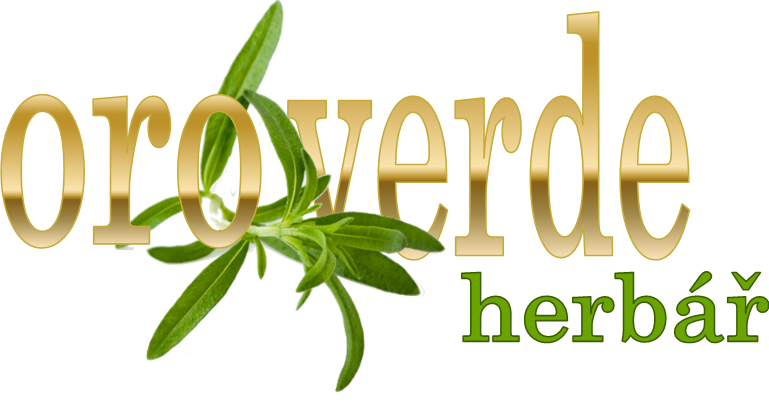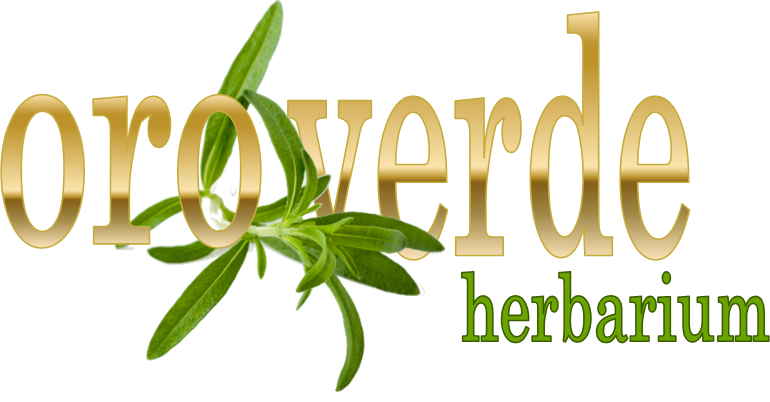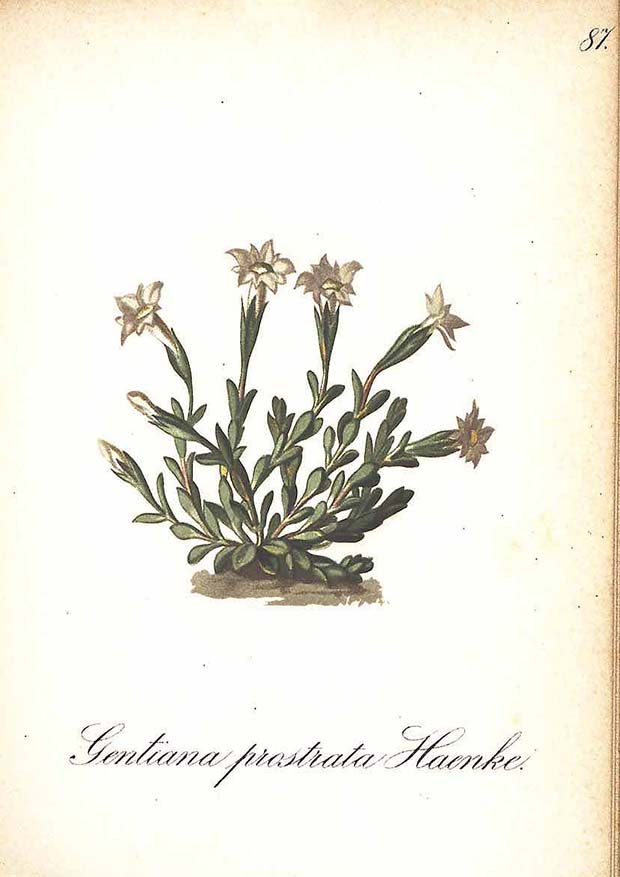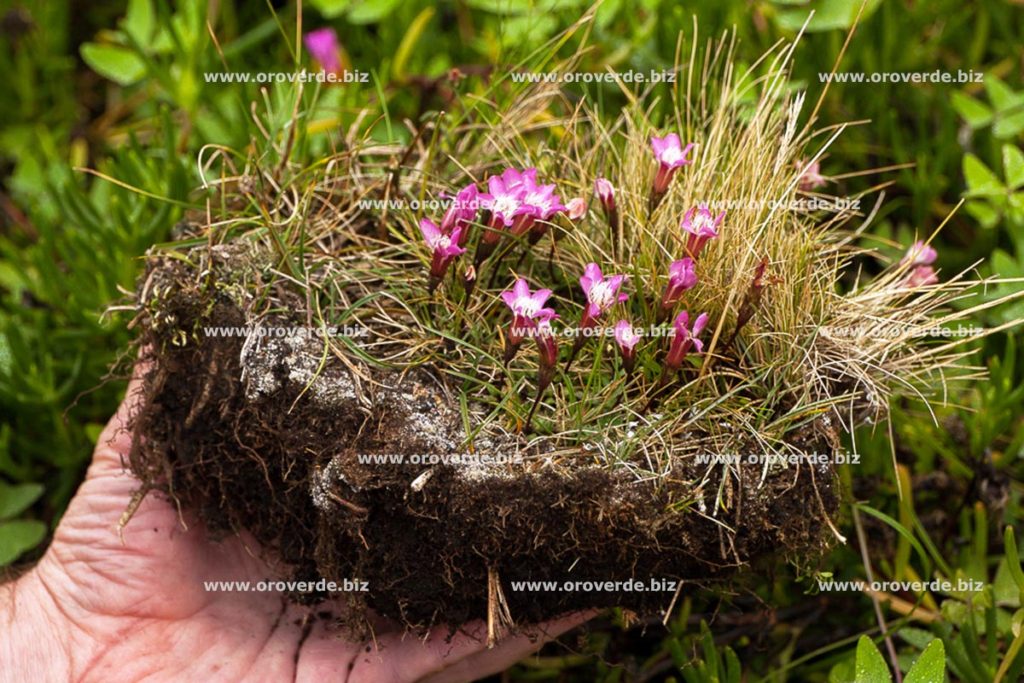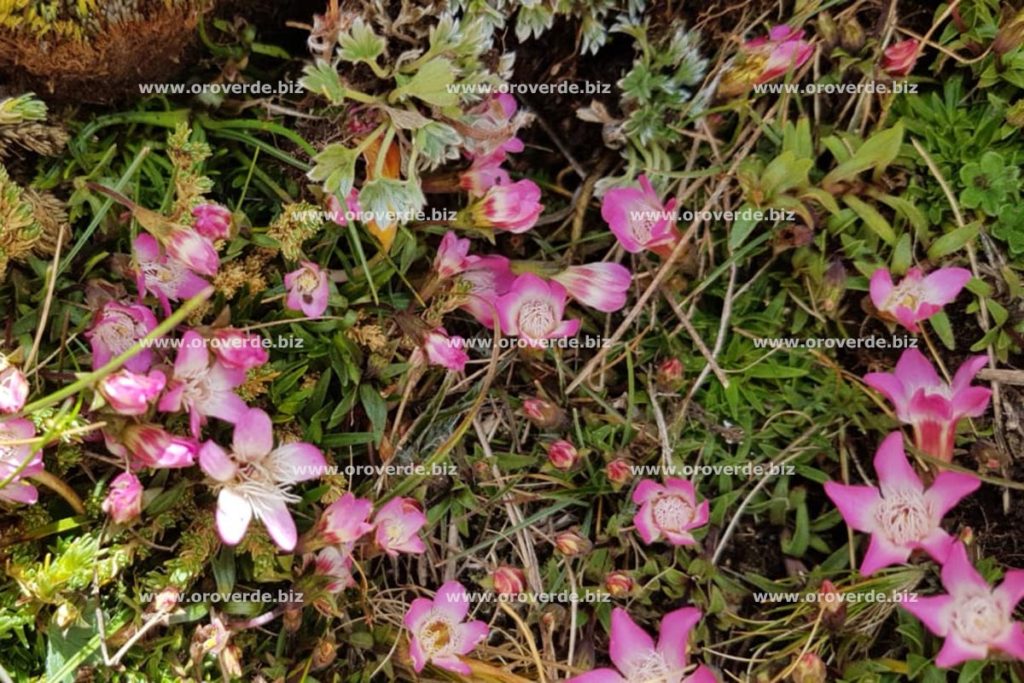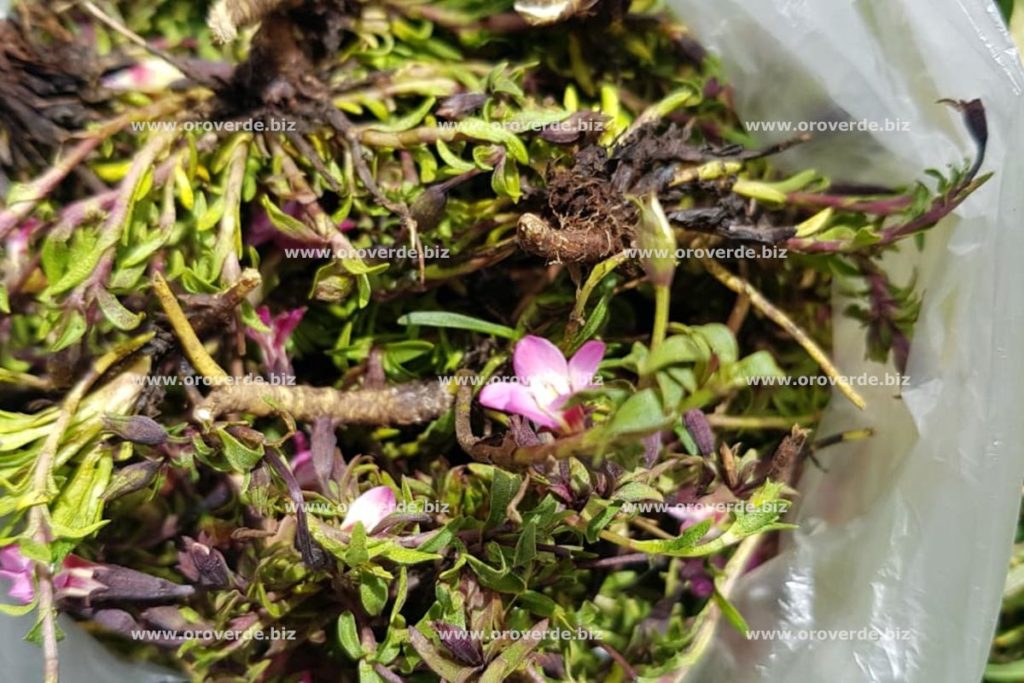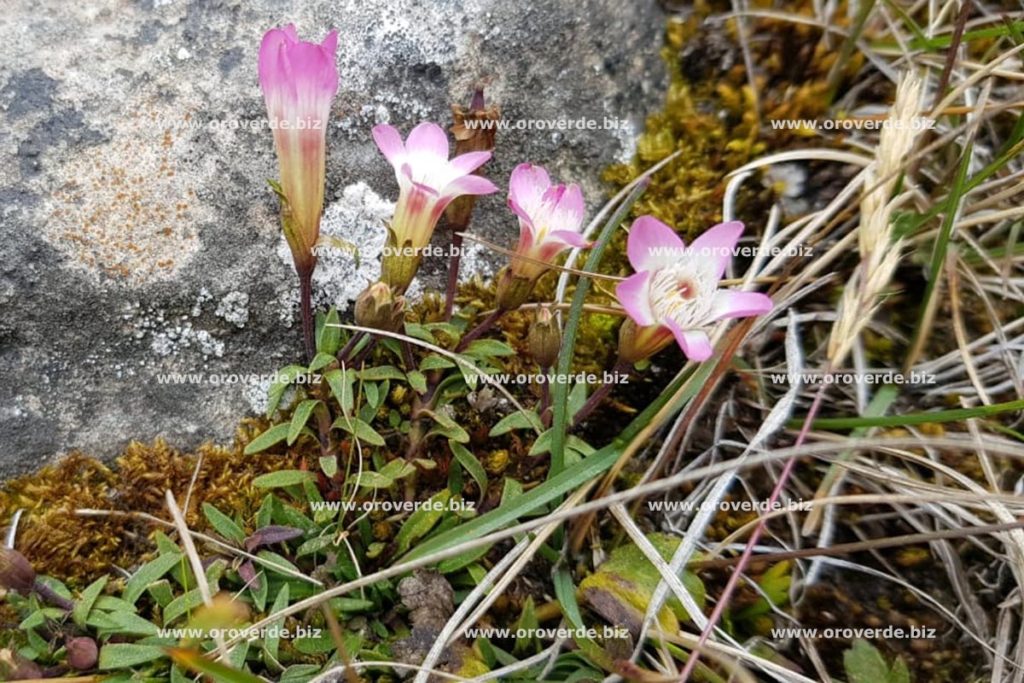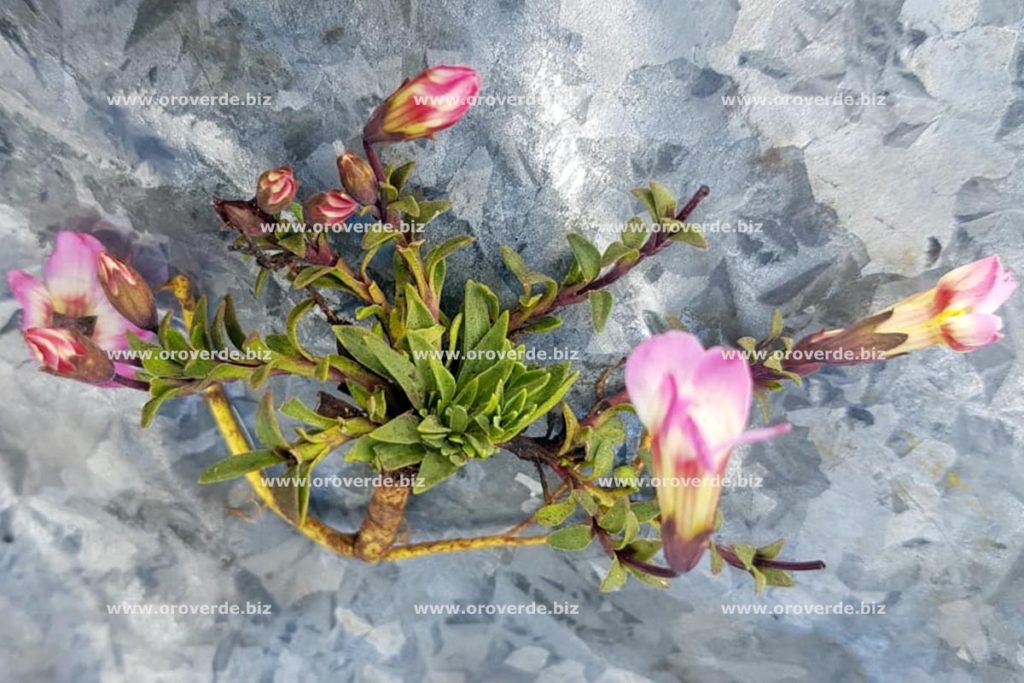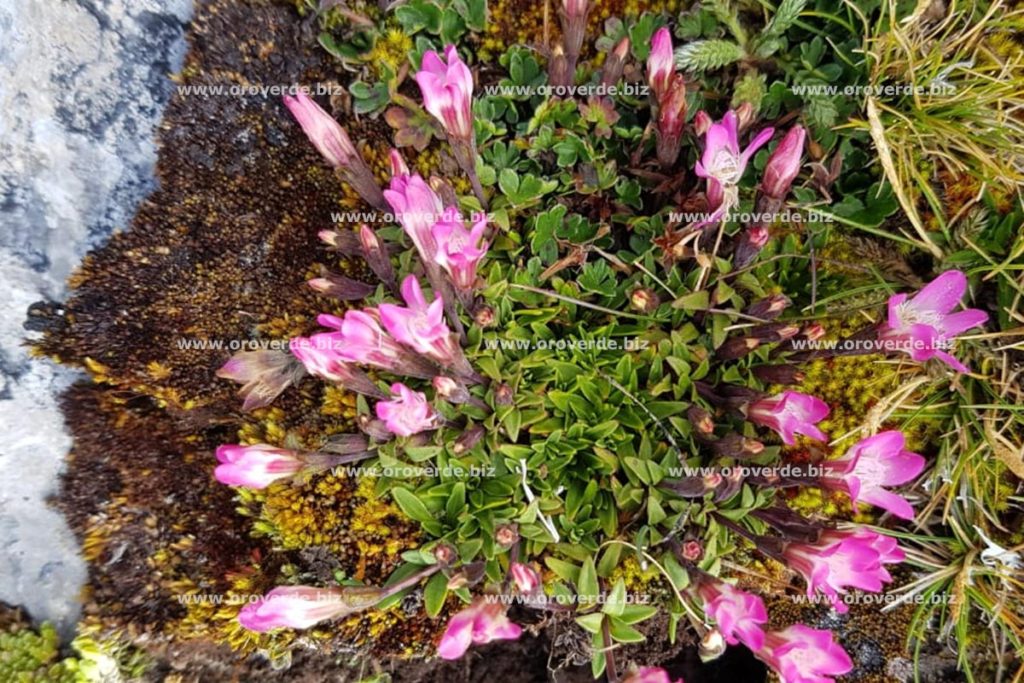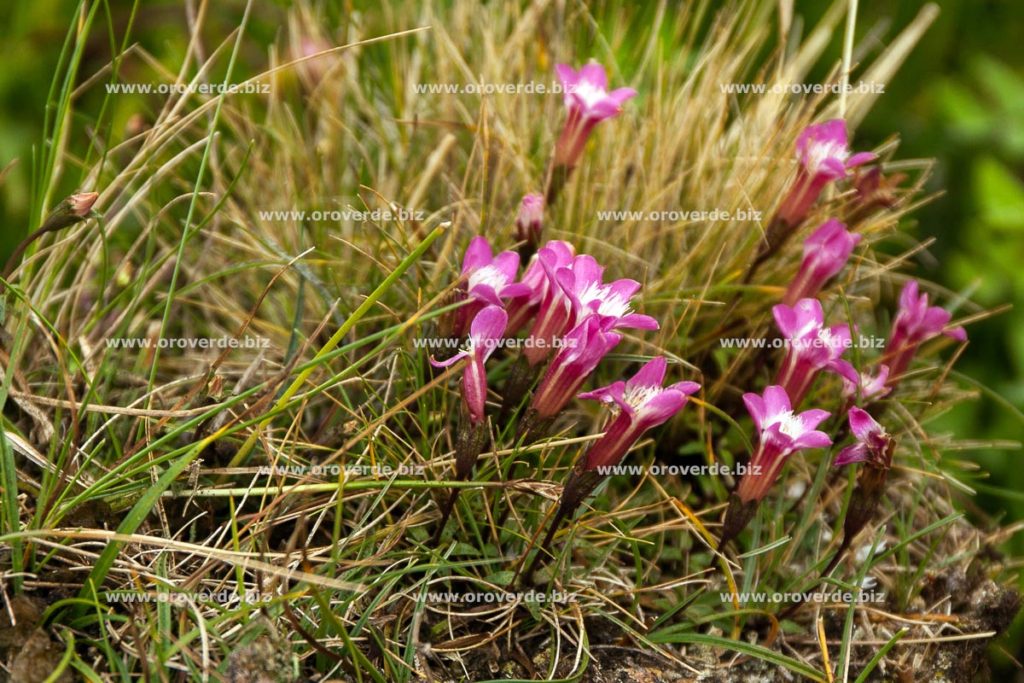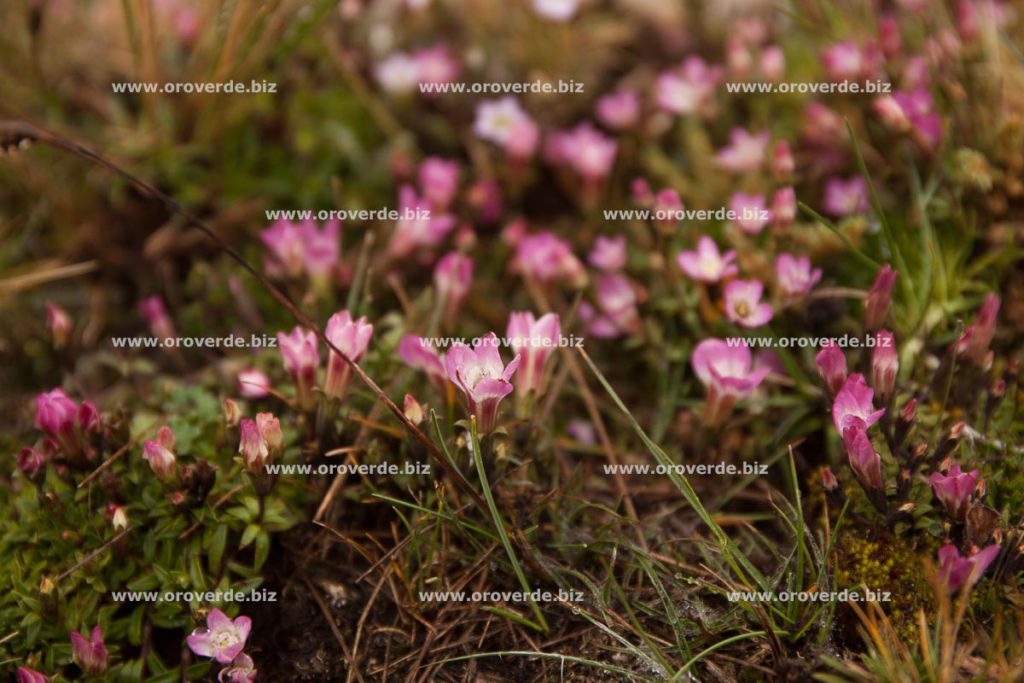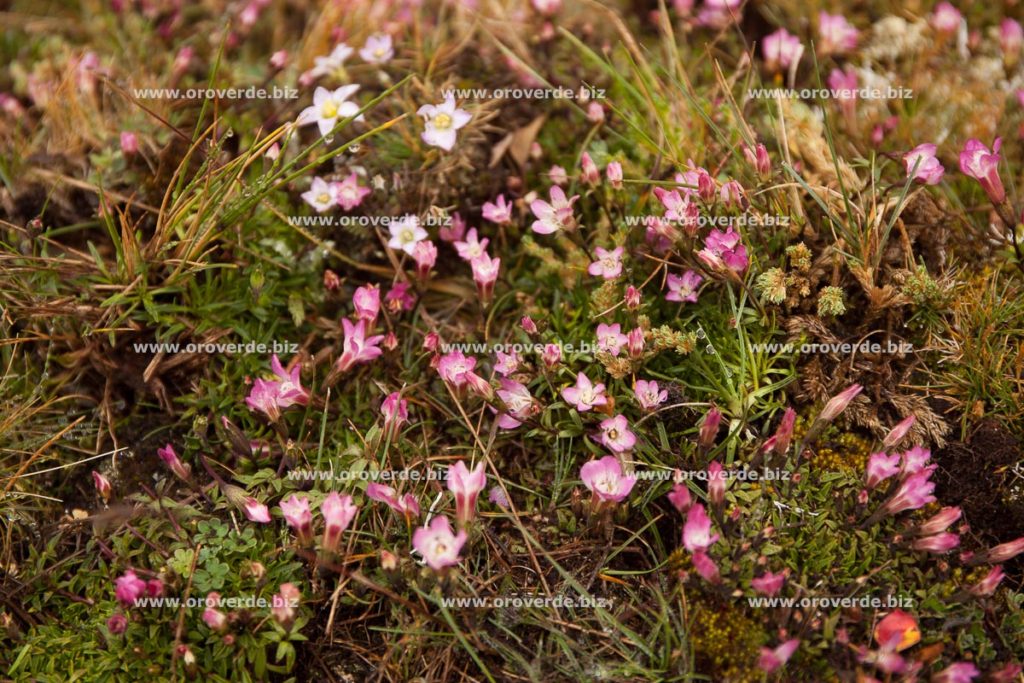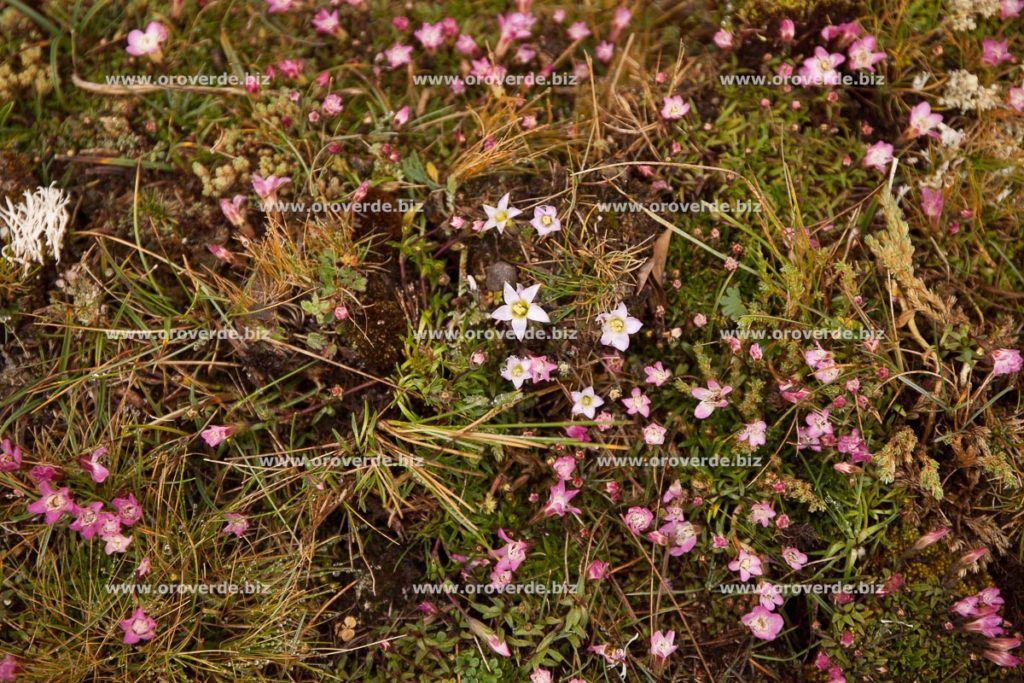It affects the following diseases:
Family: Gencianaceae
Genus: Gentianella
Species: alborosea ( Gilg, ) Fabris
Common names:
Hercampure, hircampuri, té amargo, té de Chavín.
Part(s) used:
Above-ground parts of plant (Herba gentianellae)
Description:
Mountain herb with tiny dikotonic branched stem, creating bunches. Small dark blue to mauve flowers are bisexual, with five petals. Dark green calyx, composed of five sepals, is longer than the sepals themselves. It grows in the altitudes of 3500 – 4000 m above the sea level in the Andean region in the areas with cold climate, in Peru mostly in provinces Puno, Cuzco, Cerro de Pasco, Ayacucho, Cajamarca. Since the Incan times the herb is traditionally used for the stomach ache remission, for restoring hepatic functions, for reducing fever caused by malaria, for general blood purification, for stimulation of bilious functions (secretion of bile) and as an agent for overweight reduction. Its name, Hjircan Pureck, comes from quechua language and it literally is „that, who walks”, metaphorically meaning the healers, who in times of the Incan empire circulated among separate villages bringing along medicinal herbs.
In contemporary South American herbal medicine it is used above all for hepatic difficulties moderation, for cholesterol reduction, for obesity moderation, as an anti-diabetic drug, for general blood purification and against infections. It also found its indisputable place in purgatory cures in combination with other herbs.
Its systematically vague taxon often leads to confusion with congenerous species (Gentionella nintuda, Gentiana prostrata).
The secoiridide bitter substances it contains are effective stimulants of saliva and gastric juices (amara) secretion, moderate roborancia and tonics. Its pharmacological profile is also supplemented by the monoterpenic ialcaloid gentian action, which has experimentally demonstrated anti-inflammatory, anti-hypertensive, myorelaxant effect and mildly stimulates CNS.
Contraindications:
Owing to a high content of bitter substances its use is impossible in cases of gastric or duodenal ulcer, suppurative haemocholecystitis and impassable bile duct.
Side effects:
The contained substances can provoke allergic responses of the organism of particularly sensitive individuals.
Traditional enthomedicinal uses:
For above mentioned ailments it is recommended to use the infusion of 5 – 10 grams, another source mentions a brew-up boiled for 5 minutes. Sip a cup 3 times a day.
More information you can look on the site about ordinary preparation of the herbal remedies.
Phytoterapeutic properties:
Hepatoprotective, lipoprotective, aperitive, depurative, hypocholesteric, hypotensive, antiinfectial, over-weight reduced, CNS stimulated.
Phytochemical composition:
Sekoiridoidal bitter principles, eritrocentaurine, eritaurine, monoterpenical alkaloids types of gentianin, anthocyan pigments (leucoantocyanidins), antracens, xanthons, heterosidal alkaloids, coumaríns, saponins, catechins, reduced sugars (gencianose, gecibiose), triterpens and seskviterpens, phenolic acid, fytosterol, tannins and resins, elements like Al, Ca, K, Mg, Na, Cl.
Source:
- Amazonian Ethnobotanical Dictionary, DUKE A.J., VASQUEZ R., C.R.C. Press, Boca Raton, USA, 1994, ISBN 0-8493-3664-3
- De Salvia y Toronjil – Guía de Medicina Natural para la Salud de la Mujer, VARGAS L., VARGAS R., NACCARATO P., Ed. Gráfica Bellindo, Lima, Perú, 1995
- Diccionario enciclopedico de plantas utiles del Perú, BRACK EGG A., CBC – Centro de Estudios Regionales Andinos «Bartolomé de Las Casas» , Cuzco, Perú, 1999 , ISBN 9972-691-21-0
- Jihoamerické léčivé rostliny a jejich užití středoevropskou populací, DORAZIL M., ZF MENDELU, Lednice na Moravě, 2007
- Manual de fitoterapia, LOPEZ VILLAR M., VARGAS VILLAVICENCIO O., Programa Nacional de Medicina Complementaria del Seguro Social de Salud – EsSalud, Lima, Perú, 2001, ISBN 9972-758-34-3
- Plantas Medicinales Nativas del Peru, PALACIOS VACCARO W.J., Concytec, Lima, Perú, 1997, ISBN 9972-50-002-1
- Vocabulario de los nombres vulgares de flora peruana, SOUKUP J. SDB, Editoria Salesiana, Lima, Perú, 1975
- Ziololecznictwo amazońskie i andyjskie, ŹUROWSKA K., TowerPress, Gdańsk, Polska, 2001, ISBN 83-87342-41-6
